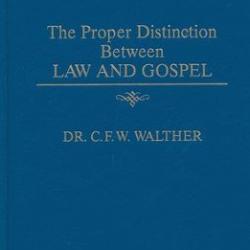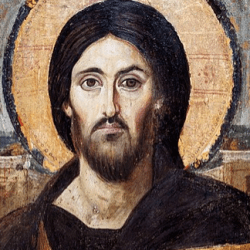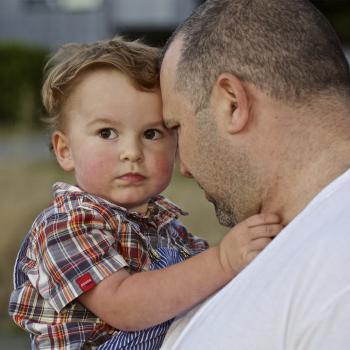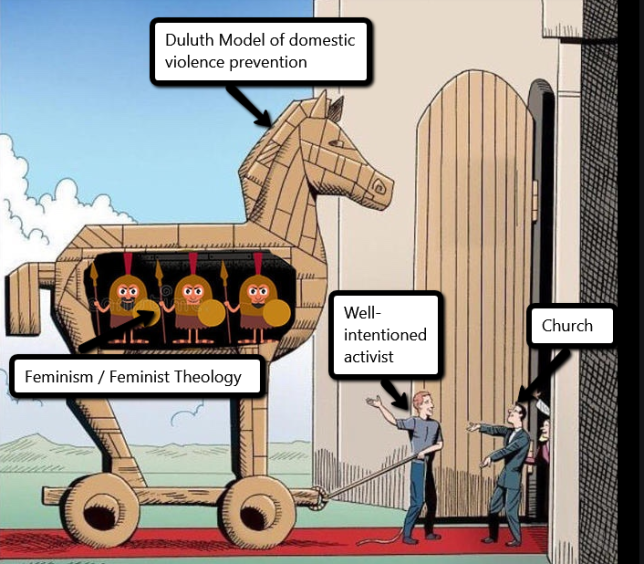
+++
Note: Per usual, please note that I am representing only myself in this post and do not speak for Pastor Cooper. This post deals with the issue of domestic violence and domestic abuse (technically, these are different things), which I am also currently doing a series on here. (update: I’ve done a second post on this topic on this blog here).
First of all, what is the “Duluth Model”? According to a definition found on one website (read on), it is “interventions that have been recognized nationally and internationally as the leading tools for helping communities eliminate violence in the lives of women and children.”
Second, speaking of violence, why in the world might a WebMD article, titled Help for Battered Men, say the following?
“Never allow yourself to be provoked into any kind of retaliation,” says Brown. “We tell men if they have to be in an argument, do it in a room with two doors so they can leave; a lot of times a woman will block the door, the man will try to move her, and that will be enough for him to get arrested.”
The reason is that when it comes to the strategy of much law enforcement as regards domestic violence today–as well as dealing with the matter in most any realm–a very specific kind of thinking is “baked in”: feminist thinking.
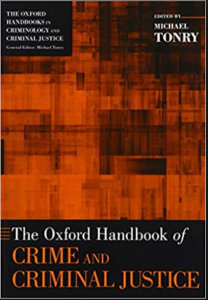
What? Yes. The Oxford Handbook of Crime and Public Policy helps us to understand the above situation, which is connected with the Duluth Model:
“…because feminist advocates were the major proponents of change within the criminal justtice system, current criminal justice policies and procedures are rooted in feminist theory and exemplified in the Duluth Model, which stresses that male battering is a calculated choice by men to exert their power and control over women (Pence and Paymar 1983)… The policy of mandatory arrest (or pro-arrest) quickly became widespread following the release of the initial results of the Minneapolis Domestic Violence Experiment…[i] Based on [their] initial results, Sherman and Berk (1984) argued that arrest had by far the best deterrent effect of all alternative activists subsequently lobbied for mandatory or preferred arrest policies… (124)
Going back to the scenario above, here is the result: if a women ended up feeling trapped in a room with a man it would be he who was guilty of abuse. And when the situation is turned around? The man is still assumed to be the abuser.[ii] All of the above illustrates why the famous Power and Control wheel, coming out of the “Duluth Model,” is not gender neutral, but is geared towards male-on-female abuse only: it shows “power imbalances in relationships between men and women that reflect power imbalances in society” [iii].
Now of course one might point out, naturally, that if statistics indicate that men are perpetrators of domestic violence more than woman — and let’s assume only for the sake of argument (What? Yes.) that this is the case — we should not be surprised by this kind of approach. At the same time, if we were to use the same kind of reasoning in law enforcement practice when it comes to different races and ethnic groups, most everyone would immediately be offended – complaining about systematic racism and the like!
What should be clear is this: the goal of this “Duluth Model” is clearly not to stop all violence or controlling behavior, but, just as they say, to “…change societal conditions that support men’s use of tactics of power and control over women.”[iv] And while it is true that on the same page this quotation occurs, they do indeed put in bold “hold batterers accountable and keep victims safe,” color me cynical. I wonder if they mean to say “keep victims safe from male privilege,” just like it says on the wheel…

The underpinnings of the Duluth curriculum do come from a historical analysis. When Europeans came to this continent, they brought religion, laws, and economic systems that institutionalized the status of women as the property of men through marriage. From the church to the state, there was not only acceptance of male supremacy, but also an expectation that husbands would maintain the family order by controlling their wives. Various indiscretions committed by wives were offenses to be punished by husbands. This system of male dominance (like any social structure where one group oppresses another) was perpetuated by: a) a belief in the primacy of men over women; b) institutional rules requiring the submission of women to men; c) the objectification of women which made violence acceptable; and d) the right of men to use violence to punish with impunity (Dobash and Dobash 1983).
What is really at issue here then? Not how effective the model is in preventing any particular act of violence – especially violence from a woman! The real target is male entitlement/privilege, toxic masculinity, patriarchy, etc. Basically, as one commentator puts it, “in the Duluth model the idea of headship is both the root of abuse, and it is in itself abuse”.

Given this mindset above then, one wonders whether or not a passage like Ephesians 5, for example, could be taught without priming women to become victims of domestic abuse! And all of this in turn this makes one wonder if church bodies like the Lutheran Church Missouri Synod (LC-MS) really know what the left hand is doing…



While the images above are taken from LC-MS documents, the purpose of this post is not to say that the LC-MS is being deliberately overtaken by feminists. And the purpose of the post is certainly not to say that the church does not need to be concerned with the topic of domestic abuse or to give wise counsel in this area (again, see the current series I am doing on the topic here). Rather, its goal is very limited and simple: to point out that the kind of thinking present in the Duluth Model definitely has an appeal to many who desire to be known as Lutherans.

I will suggest some theological changes we must make in order to have a theological position that can more adequately stand against domestic violence. Some themes we must remove or renounce; others we must strengthen or extend. Incorporating the perceptions of survivors is essential to this work. Those who have not lived in family terrors often believe that their understanding is normative, or should be normative; it may be surprising to hear how different survivors’ perceptions and needs are. Ultimately, it is my contention that deep theological thinking and reformation are necessary for the church to further the healing and prevention of domestic and sexual abuse. I will offer four specific theological proposals for renewal: peace, baptism, authority, and sexuality; I will offer four ways of seeing the world that the church needs to renounce: medieval social theory, patriarchy, biblicism, and a theology of the status quo, the belief that whatever happens, no matter what, is God’s will (2,3).…

More:
I am certainly convinced that God is not male; that the image of God as male serves to shore up male dominance and androcentrism; and that the image of God as male conceals from us many important things about God and justifies the ways of patriarchy to us. The plethora of war-like images that tumble out of the tradition, whether in Scripture or hymns, could never have developed in such profusion if the church had said over and over again that God is our Mother. For many survivors, Ntozake Shange’s line, “I found God in myself and I loved Her fiercely,” may have an enormous healing power, especially if they realize that it occurs in the aftermath of domestic violence. But Shange’s line may also shock, disorient, excite or even sometimes frighten survivors, especially if they have never had the self-worth to imagine that God could have so close a connection with them. It would not hurt our churches to image God as exclusively female for, say, a couple of decades or so, and then to pause to evaluate what we’ve learned in the course of such an experiment… (italics mine)…
David Blumenthal’s Facing the Abusing God…composes prayers for Jewish rituals that parallel the people’s asking for God’s forgiveness and insisting in turn that God ask the people for forgiveness…As a survivor, I found these… petitions to be moving. They touched some part of me that I did not know needed to be touched. (38-40, italics hers).
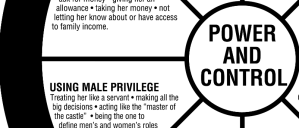
Well.
Clearly Pellauer was not shy in this document about promoting the most extreme forms of feminist theology in the context of domestic abuse in the ELCA as early as 1998 (if anything, things have gotten worse there today). In addition to the quotations above, she also says the following:
- The emergence of Latina, womanist, Asian and feminist biblical scholarship is an area of great interest and excitement that is welcomed far beyond the academy.
- I invite my church to repent of all parts of our history that rationalize, collude with, trivialize or ignore male dominance and female subordination.
- It is patriarchy that stands most deeply entrenched behind sexual and domestic violence. Rape and battering are the time-honored terrorist weapons of male domination.
- We must not be afraid to say that certain doctrines or teachings are tools of social control rather than of liberation and gracious freedom.
- Only recently, with the rise of liberation theology, has it become possible for us to say more freely that not accepting all that happens may be the more appropriate way of faith.
What does all of this mean? When it comes down to it, I can’t help but notice that in their cause vs. the patriarchy, today’s women longing for empowerment increasingly find allies among rather aggressive men who:
- Are far from chivalrous
- Consider impulses towards freer speech as anathema
- See intelligent and educated women as a threat
- Allow for not only polygamy but kinds of “temporary marriages”.
- Allow marriages to very young girls (Aisha?)
- Don’t believe the expectation of consensual marriage is something to celebrate
- etc…
And where, by the way, did the things that such men reject develop? Basically, per history, with Christian men of European descent (and the ones without faith who nevertheless followed in their train and participated in “Christendom”).
What else can we conclude then but that this must be why the stereotypical straight white Christian male is derided as much as he is?
What pathetic weakness…

Or something more extreme?
Whatever happens, Paul’s words to married Christian men come to mind: “Husbands, love your wives, and do not be harsh with them.”
And, perhaps, many others who have been led astray as well… Those who “know not what they do…”
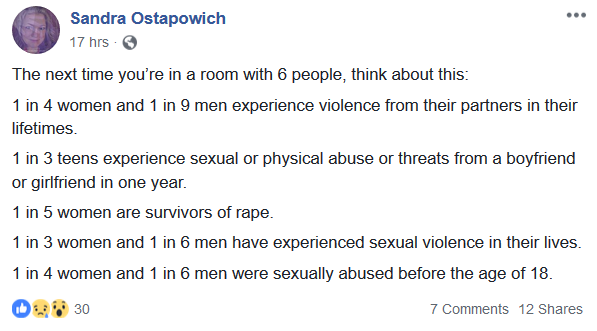
FIN
Images: D. Dutton: https://psych.ubc.ca/persons/don-dutton/ ; K. Stjerna: https://www.callutheran.edu/faculty/profile.html?id=kstjerna ; M. Hanley: http://ncbcmedia.blogspot.com/2013/11/the-national-catholic-bioethics-center.html
Notes:
[i] More on this:
“… the Minneapolis Domestic Violence Experiment… was conducted from 1981 to 1982. In this experiment, the police response to a domestic violence incident was not up to the police to determine. Their response was randomly determined. That is, the responding officers were instructed to follow one of three randomly assigned “conditions.” They were to (1) arrest the suspect, (2) order someone away from the residence or (3) try to defuse the situation and make a treatment referral. (The latter condition was the usual practice.) The researchers conducted follow-up reviews of official records. The results indicated that later assaults were reduced by half in the arrest condition. The results were widely reported on major TV network news programs and in newspapers across the U.S. In 1984, the attorney general recommended widespread adoption of “mandatory arrest” or “pro-arrest” policies. However, the study results have confronted some challenges. Later studies did not replicate the findings. There is even some evidence that arrest policies lead victims to hesitate to call the police. Also, perhaps not surprisingly, police dislike having no option for discretion as to whether to arrest or not. Thus, the policy followed by any particular jurisdiction varies. There are three general types.
WHICH POLICY?
At the state level, as of this writing, 21 states have “mandatory arrest” policies. This policy requires the responding officers to arrest when there is any evidence of domestic violence. Nine states have “pro-arrest” policies. This policy encourages officers to make an arrest in situations of domestic violence, but ultimately leaves the officer with the discretion of whether an arrest should be made or not. This policy allows police to take into account extenuating circumstances, as well as the wishes of the victim. The policy of “officer’s discretion” neither encourages nor discourages arrest, but rather leaves that decision up to the officer. Some readers might wonder if that amounts to a return of the “calm and cruise” policy, which proved ineffective in terms of protecting victims. There is still much to be done, but given the many other changes in police policies, the court systems and society in general, this probably is not the case.” (LC-MS Training Manual on Domestic Violence ; for a common “manosphere” perspective on this issue, listen to this 7 minute clip)
[ii] “Dr. Don Dutton, head of the University of British Columbia Forensic Psychology lab explains how the Duluth model has been used to train police and other officers of the court to automatically identify the man as the abuser:
“Jaffe et al. then go on to define abuse, using the “Duluth Power and Control Wheel” that includes “Using Male Privilege” as a part of an octant of abusive strategies used against women. Jaffe et al. then list, under “whom to assess”: Victimized mothers (p.44), Battering fathers (p.46) and “war torn children” (p. 49). Jaffe et al suggest using an Abuse Observation Checklist (Dutton 1992) and asking the victimized woman to describe the “first, worst and last” incident, followed by allowing the “alleged perpetrator an opportunity to respond”. It is not clear what response, apart from denial might be expected from an accused male. Indeed, the authors warn an assessor that (p. 42) the male perpetrator may “minimize their abusive behavior by blaming their victims or proclaiming that the abuse was uncharacteristic”. It seems that, once accused, the male can only use responses that the evaluator is already primed to see as disingenuous.” (from here ; original quote found here)
[iii] “Making the Power and Control Wheel gender neutral would hide the power imbalances in relationships between men and women that reflect power imbalances in society. By naming the power differences, we can more clearly provide advocacy and support for victims, accountability and opportunities for change for offenders, and system and societal changes that end violence against women” (italics mine) https://www.theduluthmodel.org/wheels/faqs-about-the-wheels/
[iv] See: https://www.theduluthmodel.org/what-is-the-duluth-model/. In this document we also read “we do not see men’s violence against women as stemming from individual pathology, but rather from a socially reinforced sense of entitlement.”


